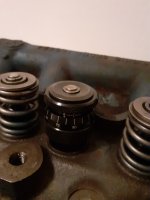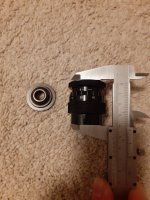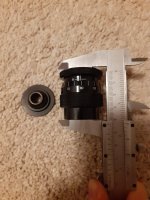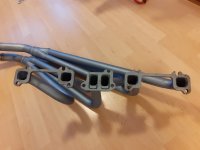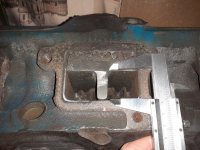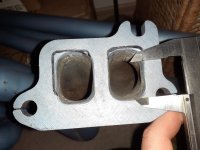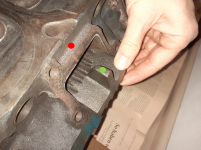Today I got my two different springs back from the machine shop. They measured the springs with a digital scale on a bench drill, so the measurements are estimates at best, but maybe helpful as a guideline. These are the numbers they measured:
Initially I wanted to install the dual springs, but it seems they are a lot stiffer than advertised. I think I will go with the Sealed Power single springs, they shouldn’t be too hard on the stock camshaft and still be able to control the valve with 1.65 rockers.
@pmuller9 the Sealed Power springs have basically the same specs you recommended, that gives me confidence they should work just fine, so thank you again for your input!
VALVE SPRING | Manufacturer reference | Advertised specifications | Measurements from machine shop |
Sealed Power 6513-1 (single spring) | B6A-6513-A | - - | installed height 1.67 --> 86lbs installed height 1.30 --> 183lbs |
Clay Smith Cams CSC-TOY-SPG (dual spring) | - | installed height 1.68 --> 100lbs installed height 0.98 --> 232lbs | installed height 1.67 --> 147lbs installed height 1.30 --> 242lbs |
Initially I wanted to install the dual springs, but it seems they are a lot stiffer than advertised. I think I will go with the Sealed Power single springs, they shouldn’t be too hard on the stock camshaft and still be able to control the valve with 1.65 rockers.
@pmuller9 the Sealed Power springs have basically the same specs you recommended, that gives me confidence they should work just fine, so thank you again for your input!
Last edited:


 but they are for sure the best choice for my setup!
but they are for sure the best choice for my setup!
